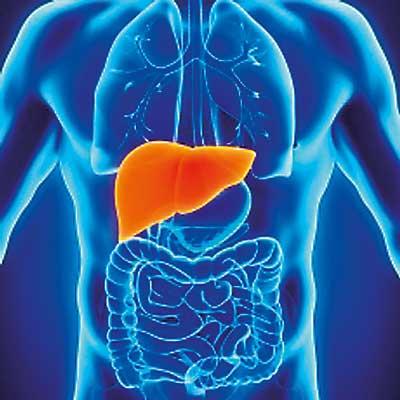Reply To:
Name - Reply Comment
 The liver is an important organ that handles a variety of functions. It is also the largest organ inside the human body. The liver is known for its regenerative capacity, however when damaged beyond an extent, it loses the ability to compensate, and the symptoms begin to appear. Since the liver is a multitasking organ, when it shuts down, the entire body is affected.
The liver is an important organ that handles a variety of functions. It is also the largest organ inside the human body. The liver is known for its regenerative capacity, however when damaged beyond an extent, it loses the ability to compensate, and the symptoms begin to appear. Since the liver is a multitasking organ, when it shuts down, the entire body is affected.
The liver can be affected by a variety of problems. Infections such as hepatitis, disorders of the immune system such as autoimmune hepatitis, infection and inflammation of the bile related parts of the liver such as cholangitis, cancers and tumours, inherited diseases such as hemochromatosis and Wilson’s disease, alpha 1 antitrypsin deficiency. Drug overdoses, such as paracetamol overdose could be fatal at worst, but most drug overdoses lead  to liver problems, as the medicines we consume are processed by the liver. The liver participates in detoxification as well, where it filters out the poisonous substances we knowingly or unknowingly consume.
to liver problems, as the medicines we consume are processed by the liver. The liver participates in detoxification as well, where it filters out the poisonous substances we knowingly or unknowingly consume.
In countries like Sri Lanka, infectious causes like Hepatitis and alcohol-induced liver problems are more prevalent than inherited conditions. Non-Alcoholic Fatty Liver Disease known as NAFLD and a form of extreme NAFLD called NASH (Non-Alcoholic Steato Hepatitis) are also common, as NAFLD is a complication of excess fat building up in the liver. This build-up is not caused by alcohol, hence the name. NAFLD is more common in people who are obese, have type 2 diabetes. Risk factors include high cholesterol and triglyceride levels in the blood.
Symptoms of liver diseases manifest in several ways according to their pathology. Jaundice or yellowing of the skin and the eyes is a well-known symptom of liver disease. Some other common signs and symptoms are abdominal pain and swelling, especially in the right upper area. Swelling in the legs and ankles, itchy skin, darker coloured urine, pale-coloured stools, tendency to get bruised easily, due to impaired clotting factor production by the liver. If the above signs and symptoms persist, it is advised that you consult a doctor at your earliest.
Alcohol abuse is a well-known cause of liver disease. Chronic alcohol abuse leads to cirrhosis. The damage caused by cirrhosis cannot be undone, but further damage could be limited with timely interventions.
Choosing to adopt a healthy lifestyle, including limiting overconsumption of alcohol goes a long way in preventing and controlling liver diseases that are not inherited. Hygienic practices can prevent hepatitis occurrences, as Hepatitis A is spread by the faecal-oral route. As contaminated food and water are known risk factors, clean food habits, opting to buy food from hygienic places, and washing the hands thoroughly before and after food preparation can stop the spread of hepatitis A.
Hepatitis B and C are more chronic types that are spread through body fluid like blood and semen. Careful injection use, precautionary measures when dealing with hospital and blood products and making sure your primary contacts too, live a hygienic life, as we come in contact with their bodily fluids regularly, can help prevent. Tattoos or body piercings must be done in reputed places. Hepatitis vaccines are also available.